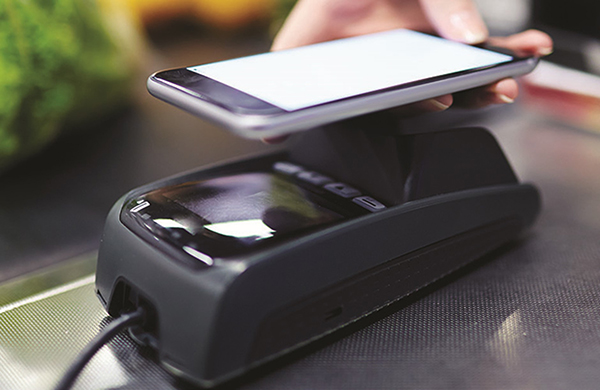08/05/21
C Store Decisions
Savvy c-stores are mastering cashierless check-in before turning their attention to frictionless checkout.

Autonomous checkout announcements by 7-Eleven, Alimentation Couche-Tard, Tesco, MasterCard and 60-plus other pilots from 100-plus different suppliers indicate what a liminal moment it is for c-store point of sale (POS) systems.
The average age of most POS platforms across the c-store industry is 10 years or more, perhaps the oldest installed POS base of any retail segment.
The first to successfully retrofit a heritage store with autonomous checkout will do more than prove the concept, they will freeze the market for legacy POS vendors and vaporize the huge pent-up demand to replace these aging systems.
Start With Check-In
But there is a big delta between a press release, piloting a retrofit of an existing store and the actual full deployment across all company-owned and franchise locations of a c-store for autonomous checkout.
What is a c-store to do? Certainly, keep your eye on what’s happening in the space, but focus less on autonomous checkout and more on autonomous check-in, making customers known and contactable through your own c-store branded mobile app. Regardless of which way the industry heads, your investments in check-in and personalization will never be wasted.
In this COVID-19 environment, customers don’t want to touch anything or enter an enclosed space, rendering the investment in autonomous checkout premature. Check-in enables c-stores to deploy new merchandising and distribution concepts such as order-ahead, curbside/pump-side pickup and delivery to squeeze more profit from the reduced visits. One example is Wawa, which is testing drive-through options.
Quick-service restaurants (QSRs) with advanced check-in and order-ahead in their apps see average order value grow by 50%. Fueling apps from the major petroleum brands not integrated with c-stores miss this upsell opportunity if not tightly integrated into the total c-store experience, not just fueling.
Check-in can provide a new level of interactivity and personalization for all touchpoints, starting by removing the Berlin Wall between petroleum-pumping apps and the in-store experience, opening the virtual door to the c-store and rolling out the red carpet to meet the customer at the pump.
The apps could provide a menu board, take orders with embedded payment, even act as a walkie-talkie to summon items — all activated through the autonomous check-in by the fueling app. C-stores need to view the pre-authenticated pump activation as a single sign-on for innovative merchandising and distribution concepts, treating it as a value-added touchpoint for personalizing other services. With that as the guiding principal, new merchandising formulas emerge such as activating pumpside vending for grab-and-go purchases or pre-assigned pickup for order-ahead in the fueling island.
Before COVID-19, the National Association of Convenience Stores (NACS) reported that c-stores drove 80% of all gas sales in the U.S., with 48% of fueling customers going into c-stores and 53% buying a beverage.

This has always been a game of inches, typically 180 to 540 inches from the pump to c-store door swing. But COVID-19 forces c-stores to think differently about the fueling touchpoint. Equipped with autonomous check-in, they can create a personalized “cash wrap” within arm’s reach, eight to 23 times closer than the c-store entrance. A check-in strategy is the cornerstone for not just replacing COVID-19 declines but increasing the addressable touchpoints for extensible merchandising concepts.
To achieve their full potential, fueling apps must graduate from rudimentary gas-pump access to full integration with the c-store and treat the pre-authenticated pump stop as a new distribution channel.
With more than 153,000 locations in the U.S. within minutes of most households, the industry can use autonomous check-in to create a supplemental, plus-one, new distribution channel at the pump for a myriad of new products and services, now personalized to known and contactable customers.
Control Your Data Rights
C-stores piloting with autonomous checkout startups will be giving access to their most prized asset, their storage keeping unit, SKU-level data, required to make these systems run. That’s why c-stores have to carefully define their data rights and check-in strategy before signing a contract to pilot autonomous checkout.
SKU-level data is the competitive advantage of every retailer, especially c-stores and grocers — an asset that must be protected.
Who owns this data?
The startups will claim “customers own the data.” This is the stance taken by all third-party intermediaries like Instacart, Grubhub and so on. These third-party intermediaries are building their value on knowing who the customer is and what their preferences are, controlling the interactive order process and steering them to what they want — even at a different retailer. Meanwhile, they’re charging retailers, c-stores and restaurants up to a 30% premium for accessing their own customers.
There is a risk in piloting with an artificial intelligence-driven, computer-vision startup because they need data to build their business. SKU-level data combined with a real-time understanding of the customer’s intent, in-store/fueling station journey, dwell time, eye-gaze, voice activated orders, etc., before checkout is the cornerstone of personalization.
Before piloting, retailers must aggressively protect their data rights when working with new entrants. Donating SKU-level data to autonomous checkout startups is giving up value-chain control, with the risk of later being disintermediated with no material compensation for the intelligence gained and the customers cultivated.
That is why retailers must perform deep due diligence in advance of piloting with startups to understand what we call the “vendor vital signs.”
At a minimum, retailers must review the capitalization table of investors, especially if a startup is funded by competitors, as they may possess data rights in advance of rival merchants, liquidation preferences, etc., in the event of a merger or acquisition, and leave participating c-stores and their data in a precarious position.
Your merchandising concept, execution and location(s) are your principal competitive advantages today. An innovative check-in strategy expands the customer touchpoints and makes your location advantage more valuable.
Subscribe to our free mailing list and always be the first to receive the latest news and updates.
